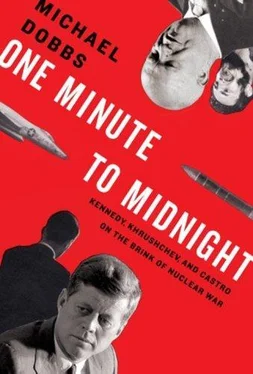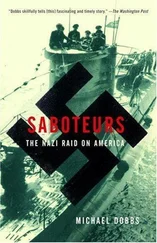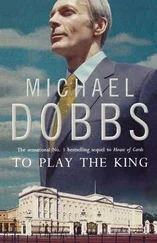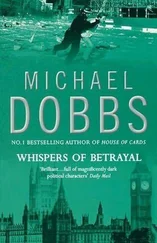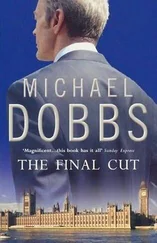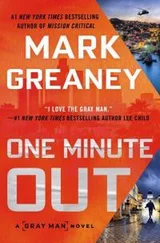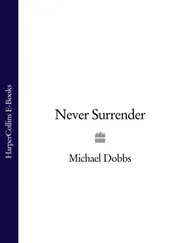“What did you say?”
“You’re in a pretty bad fix,” LeMay repeated calmly, in his flat midwestern voice.
“Well, you’re in there with me. Personally.”
The reply provoked some strained laughter around the table. A few minutes later, LeMay assured the president that the Air Force could be “ready for attack at dawn” on Sunday, although the “optimum date” would be the following Tuesday. Kennedy left the room shortly afterward.
With the president gone, the generals felt free to dissect the debate. The hidden tape recorders were still running.
“You, you pulled the rug right out from under him,” the commandant of the Marine Corps, General David M. Shoup, told LeMay.
“Jesus Christ, what the hell do you mean?” replied the Air Force chief, eager for praise.
The problem with politicians, said Shoup, was that they always tried to do everything “piecemeal.” As a military man, he preferred settling matters with “that little pipsqueak of a place” once and for all.
“You go in there and friggin’ around with the missiles. You’re screwed. You go in and friggin’ around with little else. You’re screwed.”
“That’s right.”
“You’re screwed, screwed, screwed.”
Later, in the privacy of his office, the president conducted his own postmortem on the performance of his generals. He was amazed by LeMay’s blithe assurance that Khrushchev would fail to react to the bombing of the missile sites and the deaths of hundreds of Russians.
“These brass hats have one great advantage in their favor,” he told his personal assistant and friend Dave Powers. “If we listen to them and do what they want us to do, none of us will be alive later to tell them that they were wrong.”
FRIDAY, OCTOBER 19, NIGHT
Jack Kennedy had a keen appreciation for the vagaries of history. His experiences commanding a patrol boat in the Pacific during World War II, reinforced by the lessons from the Bay of Pigs, had taught him to mistrust the assurances of military leaders. He knew that there can be a huge gulf between the orders and wishes of the man in the Oval Office and how that policy is actually implemented on the ground. One of his lasting impressions from the war was that “the military always screws up everything.”
The events of the next few days would confirm JFK’s view of history as a chaotic process that can occasionally be given a shove in a desired direction, but can never be completely controlled. A president can propose, but ordinary human beings often dispose. In the end, history is shaped by the actions of thousands of individuals: some famous, others obscure; some in positions of great authority, others who want to tear down the established order; some who strive mightily to put themselves in a position to alter events, others who stumble onto the political stage almost by chance. The story of what would later become known as the Cuban missile crisis is replete with accidental figures whose role in history is often overlooked: pilots and submariners, spies and missileers, bureaucrats and propagandists, radar operators and saboteurs.
As the president agonized over what to do about the missile sites, two such humble Cold War warriors were steering a rubber dinghy through the mangrove swamps of western Cuba. Miguel Orozco and Pedro Vera had blackened their faces and were wearing military-style ponchos. Their backpacks contained explosives, fuses, a two-way radio set, an M-3 rifle, a couple of pistols, and enough food and water to survive for a week. The electric engine on the RB-12 dinghy was equipped with silencers. The little boat made practically no noise as it drifted through the winding canal.
They had known each other for years, having waged war together against the barbudos in the Sierra Maestra. Taller and wirier than his companion, Orozco had served as lieutenant in Batista’s army. Vera was a former sergeant. Following the success of the Fidelista uprising, both men had fled Cuba and joined the CIA-trained, anti-Castro guerrilla force known as Brigade 2506. Orozco had helped transport Brigade members to the Bay of Pigs for the doomed invasion. Vera had taken part in a parachute attack on a road leading to the isolated Zapata peninsula before retreating in disarray when Castro’s troops counterattacked. He had been lucky to escape alive, and spent more than a week at sea on a small raft before being rescued by the U.S. Coast Guard.
They were headed south, up the Malas Aguas River, into the foothills of the low mountains that rise up along the northern Pinar del Rio coastline. Their target—an aerial tramway connecting the Matahambre copper mine with the port of Santa Lucia—was less than a dozen miles away as the crow flies. But the countryside ahead was terribly inhospitable: a mixture of swamp, poisonous undergrowth, and thick forest. It could take them another three or four days to reach their destination.
Every aspect of the operation had been painstakingly planned. The CIA had obtained detailed blueprints of the copper mine from the company’s former American owners, whose property had been confiscated as a result of the revolution. It had used these plans to build a full-scale mock-up of the facility at “the Farm,” a heavily forested training camp on the York River, across from Williamsburg, the colonial capital of Virginia. Back in August, Orozco had been flown to the Farm to practice blowing up the tramway and a nearby power line. His case officers believed this was safer than attacking the mine itself, which was almost certainly better protected. If the saboteurs succeeded in destroying the tramway, they could severely disrupt the extraction of copper. A CIA study rated the chances of success as “excellent.”
“You do it,” growled Rip Robertson, the Matahambre case officer, as he gave the saboteurs their final briefing in a safe house on Summerland Key, near Key West. “Or don’t bother to come back alive.”
A 150-foot “mother ship”—part of a secret CIA navy operating out of South Florida—ferried the saboteurs halfway across the ninety-mile strait of water. For this part of the trip, they were joined by another team of four Cubans who had been ordered to smuggle a thousand pounds of arms and explosives into the island for use by anti-Castro guerrillas. As they headed into Cuban territorial waters, the two teams went their separate ways. Smaller, much faster speedboats would take them the remaining part of the journey under cover of darkness.
Orozco and Vera boarded the Ree Fee, a sleek thirty-six-foot cabin cruiser capable of detecting and outrunning any Cuban coastguard vessel in the vicinity. A couple of miles from the shoreline, they transferred to the rubber dinghy.
When the channel finally became impassable, they scrambled to shore, deflating the boat and camouflaging it beneath a pile of branches. As team leader, Orozco checked the maps and compasses he had brought with him from Florida, and charted a course toward the mountains. Photographs taken from U-2 spy planes showed a 400-foot ridgeline rising above the swamp some three miles inland, on the other side of a rough dirt road. Their CIA case officers had assured them that the region through which they were passing was sparsely populated, and they were unlikely to run into anyone. But just in case, they had been issued with false Cuban identity cards and clothes manufactured in Cuba. Everything they wore, from shoes to ponchos, had been brought to the United States by refugees.
It was cloudy and humid as they put on thick rubber boots, strapped on their backpacks, and started wading through the mangrove swamp. The dark shapes ahead were silhouetted against a half-moon.
SATURDAY, OCTOBER 20, MORNING
“If the Americans see us, they will certainly be afraid,” joked Aleksandr Malakhov, head of the Communist Youth section for the 79th missile regiment, stationed near Sagua la Grande, a small provincial town in central Cuba.
Читать дальше
